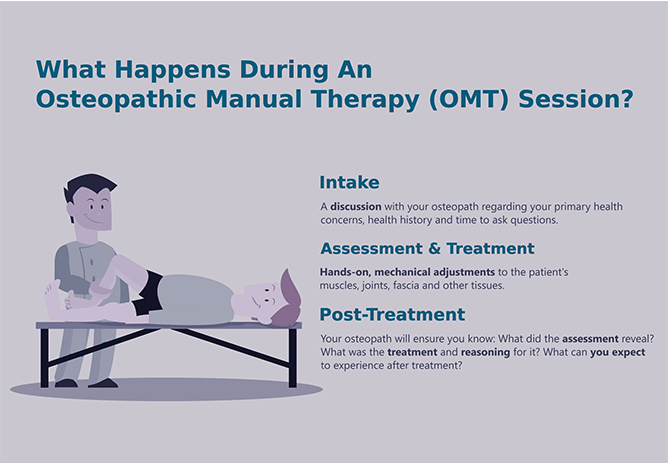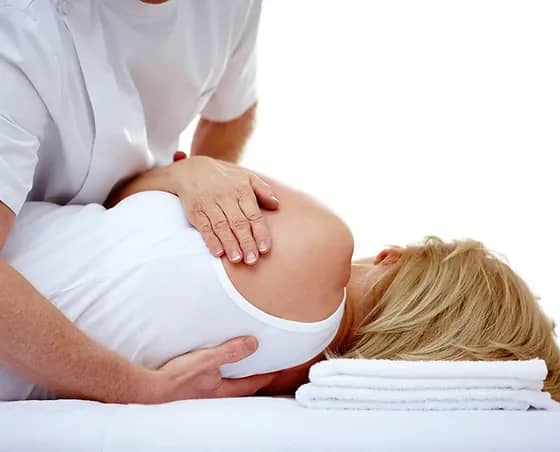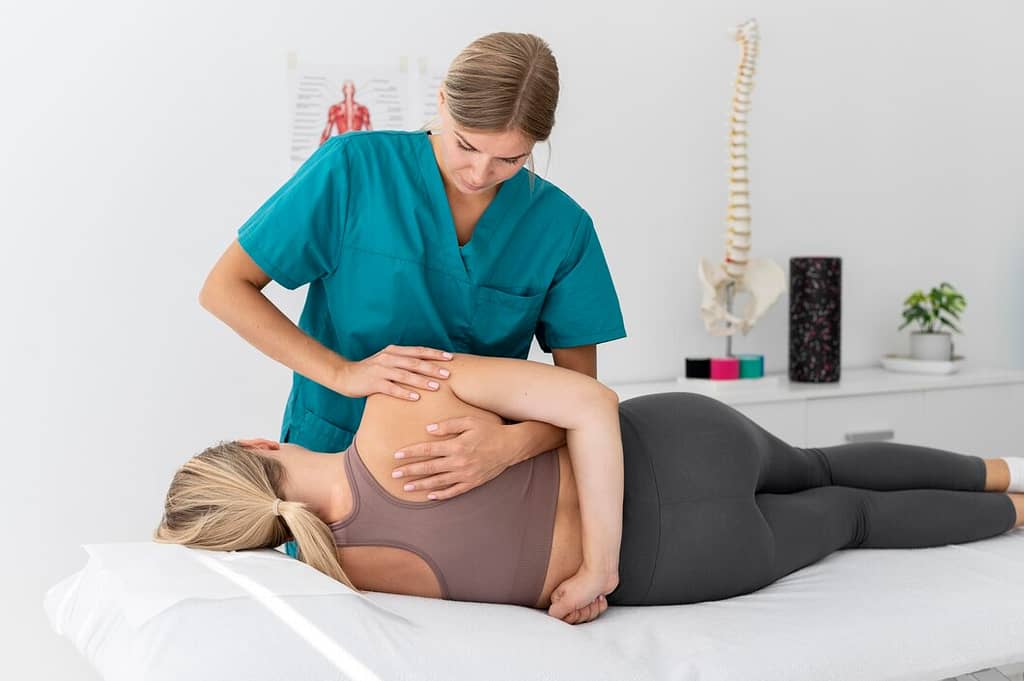
Thinking of seeing an osteopath but not sure what to expect. Osteopathy is a distinctive branch of physical therapy that works on the musculoskeletal framework by modifying and strengthening it in order to enhance the natural healing processes of the body. It’s a profession that integrates scientific knowledge with traditional wisdom, based on the principle of interrelation between all systems within an organism. So let us explore some details about osteopathy and find out how it can unlock health potentialities in your body.
What is Osteopathy?
Osteopathy is a drug-free, hands-on approach to healthcare aimed at improving circulation and correcting abnormal biomechanics throughout the whole body. The therapist will concentrate mainly on joints, muscles, and spine; however treatment should also have positive influence over the nervous, circulatory, and lymphatic systems as well. According to this system everything from digestion problems through back pains up to general well-being may be treated.
History Background on Osteopathy
Origins: Created by Dr. Andrew Taylor Still in Missouri during the late 19th century, osteopathic medicine was established upon the belief that there exists a relationship among all functions within an organism while having its own self-curative abilities.
Philosophical foundations: Practitioners do not treat only symptoms but entire individuals. They utilize palpation methods for equalizing functioning capacities among different parts so as to foster wellness universally too.
Thus, osteopathy was born from the realization that the body has an incredible ability to heal itself; anatomy was determined by this course. He believed that correction of the body’s structural imbalances could activate its natural healing mechanisms. This philosophy formed the core of osteopathy and led to the establishment of the first osteopathic school in 1892, which especially influenced the development of manual therapies in the world.
Fundamental Concepts and Techniques of Osteopathy
Osteopathy is based on several basic principles:
- The Body’s Form and Function Are Linked: A disruption in one portion of the body can create effects elsewhere, including a range of illnesses.
- Self-Healing: the body has an inherent capacity to heal if the processes are appropriately aided
- Treats to the Whole: Osteopathy treats the individual fully with concern for physical, psychic, and environmental conditions.
Common methods include soft tissue manipulation, joint mobilization, stretching, and muscle energy techniques. These are used to move various areas of the body more easily, relieve pain, and achieve greater functional movement by restoring structure.
Exploring the Healing Benefits of Osteopathy
There are several health benefits one can gain by choosing osteopathic care over other forms of treatment:
Increased Flexibility: Techniques used during sessions can lead to improved range motions hence flexibility too being enhanced.
Pain Relief: A significant number of patients report experiencing lower levels / no pain after undergoing osteopathic intervention without using any drugs whatsoever.
Better Blood Flow: Treatments given facilitate faster circulation which is vital for the recovery process to take place effectively within the body system.
Stress Reduction: Apart from being hands-on, therapists usually work closely with clients, thereby creating a conducive environment that promotes relaxation and helps relieve stress and its associated tension.
Improved mobility: Osteopathic treatment can enhance joint flexibility and range of motion.
Enhanced well-being: By restoring balance to the body, osteopathy can promote overall health and well-being.
Non-invasive approach: Osteopathy is a gentle and non-invasive treatment option.
Holistic care: Osteopaths consider the whole person, not just the symptoms, leading to a more comprehensive approach to healthcare.
Who Can Benefit from Osteopathy?
Many people can benefit from osteopathy, including:
- Athletes: Prevent injuries, peak performance, and faster recovery.
- Pregnant women: Facilitates relief from the discomfort of changes brought about by pregnancy.
- Office Workers: Relieves tensions in the neck, shoulders, and back due to bad postures or spending much time sitting.
- Elderly: Enhances mobility, reduces pain in the body, and enhances quality of life.
Osteopathy may also be offered to children and babies who suffer from colic, digestive problems, or have postural problems. This treatment seems to fit any lifestyle and health condition.
Step-by-Step Guide: What Happens During an Osteopathy Session?
A typical osteopathy session follows this pattern:
- Assessment: The session starts with a detailed talk on your background health, lifestyle, and symptoms.
- Examination: The osteopath will assess your posture, muscle and joint balance.
- Treatment: Osteopath applies manual techniques in soft tissue manipulation, stretching, and joint adjustments on concerned areas.
- Upon Session Advice: The counselor may provide advice on exercises, posture improvements, or lifestyle changes for the distant future.
The consultation lasts about 30 to 60 minutes. Patients are required to dress casually and be ready to discuss their health needs with the counselor.

Scientific Insights: What Does the Research Say About Osteopathy?
There have been successful studies concerning osteopathy especially on musculoskeletal disease conditions. Studies have been able to demonstrate that osteopathic manipulative treatment is a proper way to reduce the pain and limit the production of spasm in conditions such as back pain, neck pain, and arthritis.
Osteopathy has also provided research evidence to help alleviate the symptoms from chronic conditions like migraines and fibromyalgia. Still, the scientific community continues to call for more robust clinical trials that will fully validate the broad benefits of osteopathy. Whereas the treatment is warmly received and commonly applied, much more proof will be required to consolidate it as a legitimate combination with other conventional medical treatments.
Debunking Common Myths and Misunderstandings about Osteopathy
There are a few myths and misconceptions prevalent regarding osteopathy:
- Osteopathy is the same thing as chiropractic therapy: Whereas both work through adjustment via manual postures, osteopathy is prepared to attend to the whole body with attention to structural balance rather than the spinal column only.
- This is osteopathy only for the back pain: Osteopathy can treat a variety of complaints from digestive disorders to migraines.
- Osteopathy hurts: The treatments involving osteopathy are mostly gentle and are not painful.
Knowing these facts can help dispel some of the confusion and thereby allow more people to benefit from the wide range of applications of osteopathy.
How to Find a Qualified Osteopathy Professional?
Effective treatment means finding a qualified osteopath. If you are selecting a practitioner, the first thing to do is ensure that the osteopath is registered with some of recognized bodies, such as General Osteopathic Council, UK, or the American Osteopathic Association, US.
- Experience: Ensure that the practitioner has experience in treating your specific condition such as chronic pain, sports injuries, or postural issues.
- Patient Review: Another great insight into their expertise is through reviews or recommendations of trusted peers.
- Initial Consultation: Ask any questions that you might have concerning their method or approach to treatment and their specific plan for you.
A professional osteopath should be transparent about his qualifications, listen to your concerns and be clear on the treatment process
Integrating Osteopathy with Conventional and Complementary Therapies
Osteopathy harmonizes well with conventional medicine besides other alternatives. For example:
- With Conventional Medicine: The integration of osteopathy happens in concurrence with physiotherapy, surgery, or medication whereby it results in maximum recovery for chronic pain or injury.
- Complementary Therapies: Acupuncture, yoga, and massage are some practices that can complement osteopathy in making health intervention more holistic.
When applied in this way, the outcome is maximized because different areas of a body and mind are tackled, thus making the treatment provided more holistic and showing support for healing physically and emotionally
Maximizing the Healing Potential of Osteopathy: Expert Tips
For maximum results from osteopathic treatment, here’s your guide:
- Lifestyle Changes: Proper posture, regular exercise, and proper ergonomic adjustments often help you in osteopathic care.
- Consistency: Regular sessions are better than one-time or infrequent treatments for a chronic condition.
- Home Exercises or Stretches: Most practitioners advise home exercises or stretches for the continuance of beneficial effects.
- Diet and Hydration: Proper diet and hydration maintain healing processes within the body.
In this respect, by introducing such practices, the patients will be allowed to capitalize on the therapeutic opportunities inherent in osteopathy and build a long-term well-being opportunity

Understanding the Risks: Potential Side Effects and Precautions of Osteopathy
Osteopathy is quite a safe form of treatment. However, like any other treatment, it professionally entails some risk:
- Soreness: A small number of afflicted patients will also experience tenderness or tightness of the body parts treated on which a procedure similar to exhaustion may take effect.
- Medical Conditions: The technique is just however ill-suited to patients who have had certain diseases such as broken bones, osteoporosis and other infections.
- Pregnancy: Prenatal women require comprehensive discomfort relief by practitioners who are adept at rendering treatments appropriately fitted for pregnant persons.
Despite being considered as a form of treatment that is safe and non-invasive, there is always reason enough to specially state any fears or a condition that may already exist with your physician before any osteopathic treatment is undertaken.
Cultural Perspectives: How Osteopathy is Practiced Around the World
Different countries have developed osteopathy in unique ways:
- United States: Service members’ engagement in osteopathic practice is very actively developed within the practice of medicine. Osteopathic physicians belong to the class of medical professionals which means they are license bearer who provides medical services, engages in surgery and drugs prescribing.
- United Kingdom: In comparison with conventional medicine, osteopathy is viewed as the complimentary therapy and practice of hands on techniques and holistic medicine approaches.
- Australia and New Zealand: Osteopathy ranks really high and regulation is high and well practised and does revolve pretty much around manual and musculoskeletal therapies.
Even if there are these regional differences, the characteristic of osteopathic medicine everywhere remains the same – creating a healing process by enabling a person’s body through manual treatment.
Personal Growth and Osteopathy: How It Can Transform Your Life?
Osteopathy is more than physical healing since it promotes individual development enabling people to seek wellbeing. Numerous patients claim:
- Enhanced Body Consciousness: Osteopathy forces people to attend and grasp bodily cues.
- Stability: Getting rid of physical discomfort is likely to improve how we feel, as constant pain frequently makes us feel bad.
- Self-Agency: The nature of this treatment encourages people to get involved in looking after themselves and thus helps them feel more in charge.
All these factors help the patients grow as persons therefore making osteopathy a discipline that has a lot more than attending to the health of the patients’ physically.
The Challenges and Controversies Surrounding Osteopathy
Similar to most remedies that operate outside the orthodox system, this one meets harsh denunciation. Particularly, scientific proof lacks the status of a requirement for osteopathy. Critics admit that relief can be provided to patients afflicted with musculoskeletal illnesses by means of osteopathy but there is no basis to such osteopaths-therapy extending beyond musculoskeletal issues.
The other instances, especially among the orthotic practitioners quite a section is rather skeptical of osteopathy especially because of the focus on hands and not drugs. Even so, many people who have undergone treatments claim that it works for them and osteopathy is on the way to being accepted as part of treatments.
Instrumental testing and practical testing of these controversies should not remain merely wishful thinking but ought to be practical instruments in bringing closure to all parading disputes.

Understanding the Financial Investment in Osteopathy
Osteopathy prices are affected by place, skill of the practitioner and duration of the session. Usually, tenants for first consultations lie in the range of 60-150 dollars with follow-ons commanding prices between 40 to a hundred dollars. Some of the insurance accruements cover for osteopathy since it would be used to treat for instance back pain.
However, patients without insurance may notice that the costs bear weight over time especially when they are in need of continuous treatment. In order to make osteopathy less expensive, think about:
- Health Insurance: some policies include osteopathy or reimburse for it.
- Packages: there are practitioners who offer a discount for a certain number of sessions.
- Low Cost Clinics: A few osteopaths may charge a lower fee based on the patients earnings.
Spending your energy for osteopathy can be beneficial, but you should make a rough understanding of the expenses and know why they arise.
Empowering Yourself: How to Become a Practitioner of Osteopathy?
In order to practice as an osteopath, a prospective practitioner should undergo formal education and training. All over the world, the aspiring practitioners should most probably:
- Earn a Degree: Some degree programs will require at least a bachelor of osteopathy or a master of osteopathic medicine.
- Clinical Practice: This is the practical component which takes place under a licensed practitioner.
- Boarding: Diploma of graduates is not a permission to practice until after passing some test for certification.
If you’re looking to help others in a holistic way, becoming an osteopath is the right career path for you. Those who seek to maintain their successful practice should always be learning and keeping up to date with changes in the caring profession.
Creating a Community: Connecting with Others Who Practice Osteopathy
To create a community in support of osteopathic practitioners these options could be exhausted:
- Discussion Boards and Social Networks: Find forums where practitioners and patients exchange experiences, tips, and resources.
- Event-Specific Meetups: Participate in activities related to osteopathy and holistic health, and meet individuals with shared interests.
- Groups for patients: Some osteopathic clinics have organized support groups for patients having the same individual problems which helps unite patients’ families.
Engaging with other people does help in broadening the scope of osteopathy as well as creating a good network for learning and growth.
How to Get Started with Osteopathy: Beginner’s Resources and Recommendations
In case one wishes to venture into learning alternatives that osteopathy presents, the following resources would be of great help:
- Literature: “Foundations of Osteopathic Medicine” is a complete handbook for those seeking to view osteopathy as an art.
- Internet: American Osteopathic Association (AOA) and General Osteopathic Council (GOsC) have reliable information on osteopathy and matters of locating any registered practitioner.
- Training programmes: There is an introduction into osteopathy mostly based in online classes or on-site workshops for individuals who have wonder on the its procedures and advantages.
That provides a basic framework within which to appreciate the combination of osteopathy and locating the proper specialist.
Wrapping Up!
Osteopathy is a comprehensive method where the body is treated as an independent system and, not necessarily an isolated symptom. Emphasis on manual therapy, structural balance, and self-healing are what differs osteopathy from other forms. If you face chronic pain or will do anything to increase mobility or support natural healing, then osteopathy might be there to rescue. Commit only after discussion and consultation with a healthcare professional to see if you do actually need osteopathy or if it is relevant to your health needs or goals.

